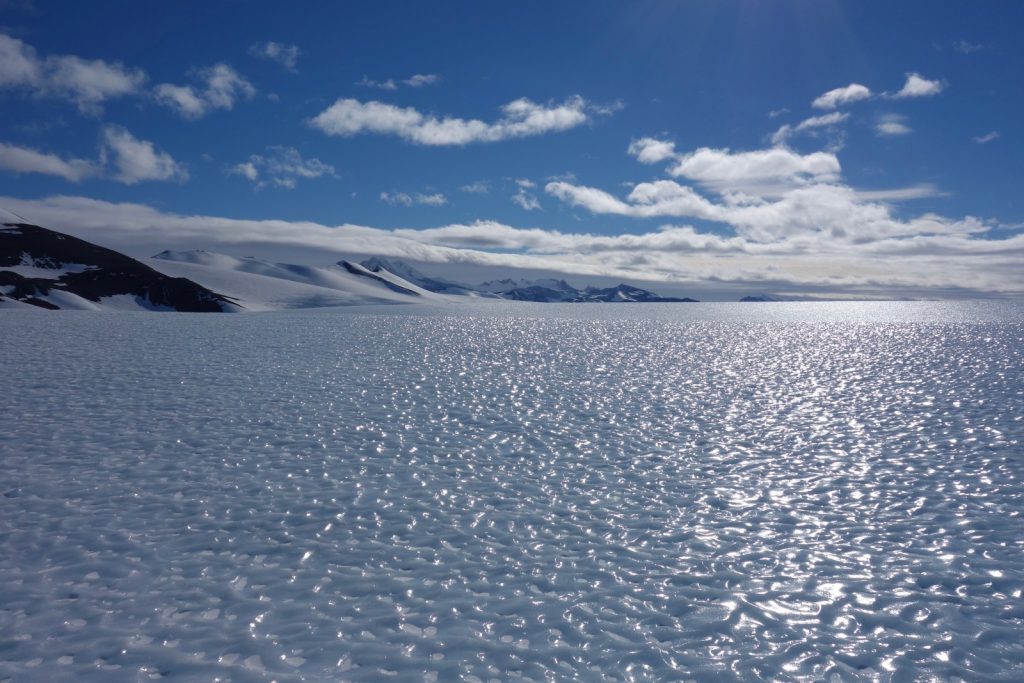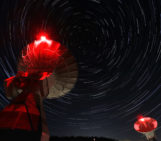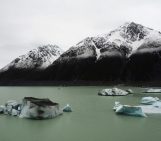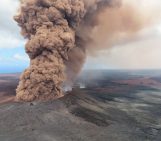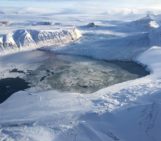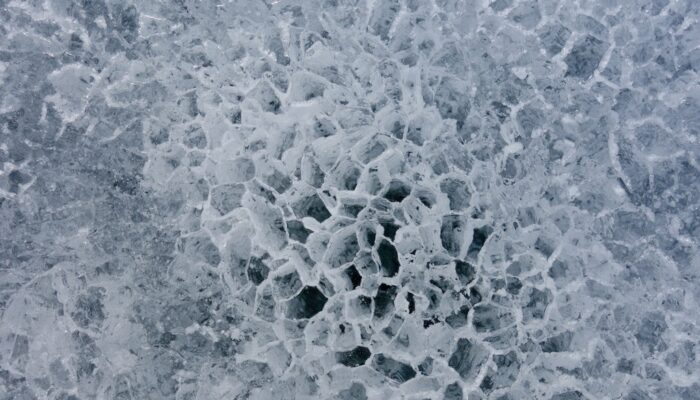
These delicate ice structures may look like frozen honeycombs from another world, but the crystalline patterns can be found 80 degrees south, in Antarctica, where they are shaped by the white continent’s windy conditions.
In Western Antarctica is a 9-kilometre line of rocky ridges, called Patriot Hills. Often cold wind furiously descends from the hills across Horseshoe Valley glacier, sculpting doily-like designs into the surface layer. “The wind exploits weaknesses in the ice structure, picking out the boundaries between individual ice crystals, leading to the formation of a honeycomb pattern,” said Helen Millman, a PhD student at the University of New South Wales Climate Change Research Centre, who captured this photograph at Patriot Hills.
Besides creating decorations out of Antarctica’s ice, the region’s intense winds, known as katabatic winds, also cause sublimation, in which the ice on the glacier’s surface turns directly into water vapour. This phenomenon creates a snow-free zone that experiences a net loss in frozen mass, also known as ablation; it also gives the ice a slightly blue hue and ”small, smooth waves that resemble the ocean in a light breeze, despite the intensity of the katabatic winds,” Millman added.
“Since older ice rises as the surface layers are ablated, the ice at the surface of blue ice areas may be hundreds of thousands, or even millions of years old,” said Millman. This allows for some pretty interesting geological artifacts to reach the glacier’s surface, such as meteorites. “This conveyor belt of old ice rising to the surface means that high concentrations of meteorites can be found in blue ice areas.” Scientists can study these ancient Antarctic meteorites to learn more about the formation and evolution of our solar system. The Antarctic Search for Meteorites program for instance has collected more than 21,000 meteorites since 1976, and are on the hunt for more.
References
IceCube South Pole Neutrino Obesrvatory, University of Wisconsin-Madison
Imaggeo is the EGU’s online open access geosciences image repository. All geoscientists (and others) can submit their photographs and videos to this repository and, since it is open access, these images can be used for free by scientists for their presentations or publications, by educators and the general public, and some images can even be used freely for commercial purposes. Photographers also retain full rights of use, as Imaggeo images are licensed and distributed by the EGU under a Creative Commons licence. Submit your photos at http://imaggeo.egu.eu/upload/.

